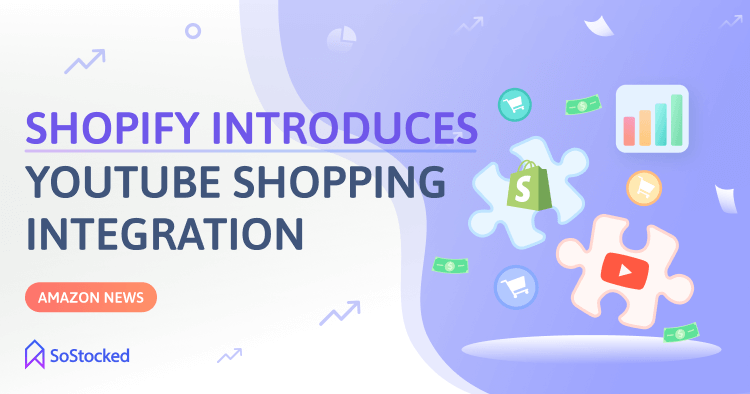
Shopify Introduces YouTube Shopping Integration to Compete in Live Commerce
Canadian tech giant Shopify continues to challenge Amazon’s dominance over the US eCommerce market, from acquiring Deliverr to offer 1- to 2-day shipping to recently teaming up with YouTube to allow merchants to directly link their stores and sell products on the video platform.
Shopify Gets on the Live Commerce Trend
On July 19, Shopify launched YouTube Shopping to make it easy for sellers to manage and sell merchandise across their YouTube channels. 💪
Key features include:
- Connect your Shopify store to Youtube.
- Display your merchandise on YouTube in three different ways: livestreams, on-demand videos to show products in the end screens or in a product shelf below your videos, and a dedicated store tab to feature all your shoppable content.
- Access to live shopping tools that will allow you to tag and pin products at key points during a livestream.
- YouTube Shopping API automatically syncs your inventory data with Shopify so that shoppers can see whether a product is in-stock or out of stock in real time.
- If eligible, you may opt to enable on-site checkout so that shoppers can buy items directly from your YouTube channel. Read Buy on Google to learn more.
- Manage YouTube Shopping orders, returns, and payments, as well as monitor your key performance metrics for your live streams directly from your Shopify account.
As of July 2022, YouTube Shopping is available to Shopify sellers worldwide. However, they will need a minimum of 1,000 subscribers to use it.
👉 Check out the full list of requirements to see if you’re eligible.
A Move to Compete With Amazon
Shopify has been steadily merging live shopping elements into its platform over the last few months.
Back in March, the company launched Linkpop, a link-in bio tool for influencers. This tool allows people to promote links to their own website, YouTube channel, and other pages and simultaneously advertise their Shopify products that their followers can buy without leaving the link-in bio page instead of clicking on a separate URL that directs them to a different website.
One month later, Shopify acquired Dovetale, an influencer marketing tool that helps sellers recruit and manage their own brand ambassadors and influencers. The eCommerce giant had also recently hired Yeezy General Manager, Jon Wexler, to lead its Creator and Influencer Program.
These recent moves suggest that Shopify wants to position itself as the main live commerce platform for both sellers and content creators, rivaling Amazon Live, which potentially is now the biggest competitor after TikTok canceled its live commerce expansion plans in the US and Europe due to poor sales.
Live commerce is booming in China with sales expected to reach $423B by 2022, but only $11B in the US in 2021 and $25B by 2023. Nevertheless, these surveys show that there’s a growing interest in live shopping among US consumers. 🤔
And so, the two eComm giants are fighting to grab a share of the growing market that’s seen as the future of retail by Facebook, Twitter, among other social media sites.
However, Amazon is reportedly struggling to be the first to make live commerce happen in the US due to its lackluster content (not entertaining enough) and poor online presence (little or no interest from shoppers), according to Marketplace Pulse Founder and CEO, Juozas Kaziukėnas.
Perhaps Shopify could succeed where Amazon failed by using a live commerce-focused platform like YouTube Shopping coupled with robust influencer marketing efforts that include Dovetale and Linkpop. Sellers would be able to easily find and manage their influencers on Dovetale, offer an easy checkout process via Linkpop or YouTube’s on-site checkout, and host livestreams on YouTube, for example.
YouTube already has a captive video-viewing audience, whereas Amazon is trying to retrain their customers to consume video content that is somewhat hidden on their site. It’s been an uphill battle for AMZ to try to shift the platform to being more social whereas Shopify is going straight for the jugular with YouTube and link-in bio plays.
That said, it’s a very exciting time for consumers, but challenging for sellers, as they attempt to spend a lot of resources trying to create an attractive product selection, provide a seamless live shopping experience, and produce engaging content with influencers. Luckily, Shopify could potentially make all of that easier with their suite of live commerce apps and partnership with YouTube. 🔥
Need more information?
- Send Message: We typically reply within 2 hours during office hours.
- Schedule Demo: Dive deeper into the nuances of our software with Chelsea.
- Join Live Upcoming Webinar: New to Amazon inventory management? Learn three inventory techniques you can implement right away.
 Start Your Free Audit
Start Your Free Audit